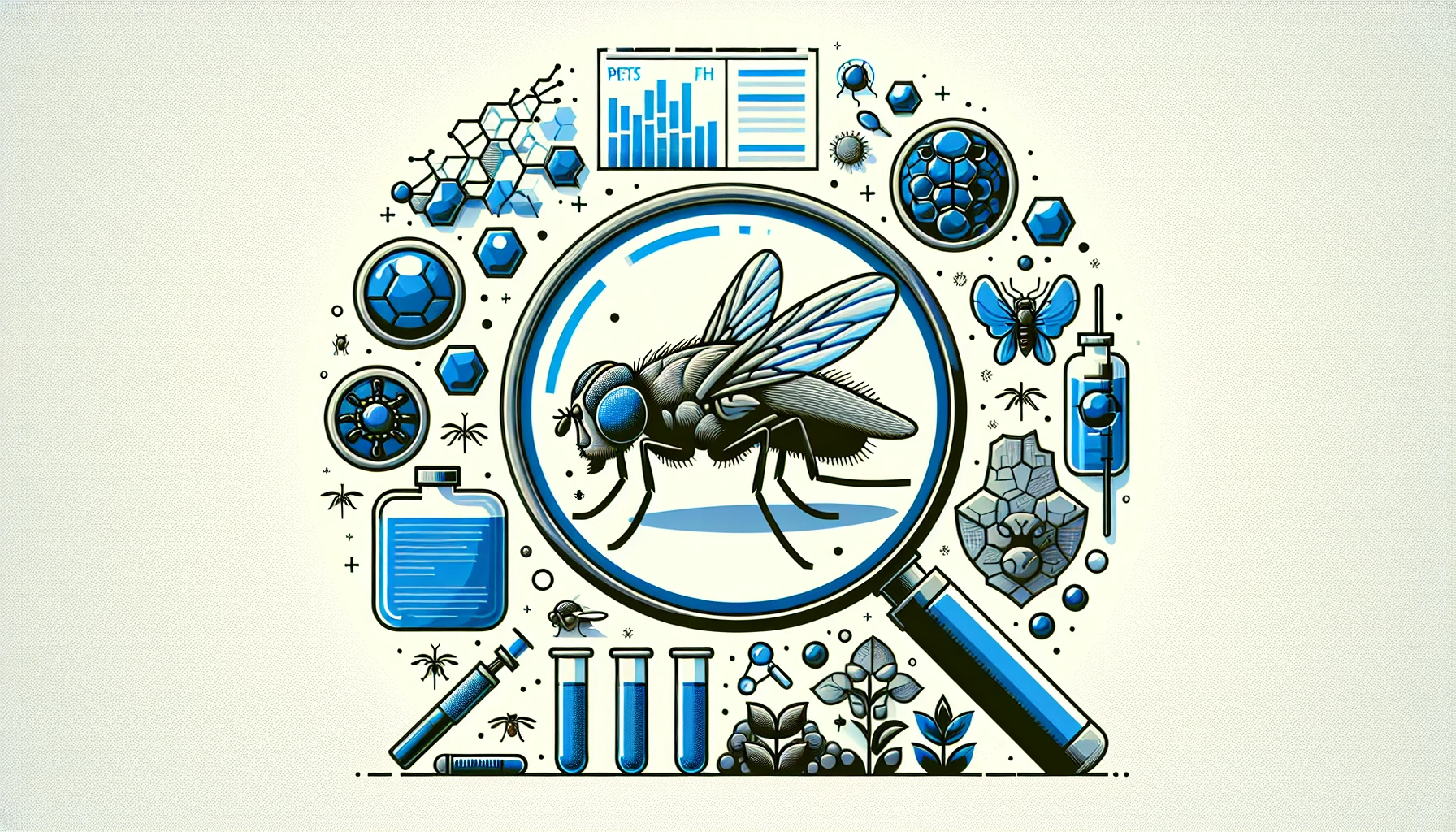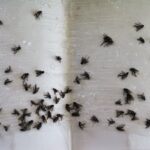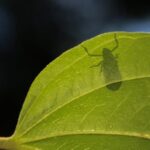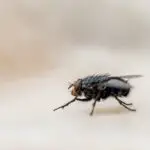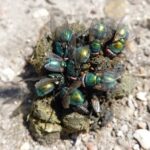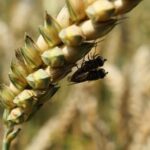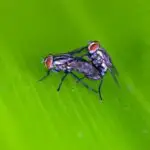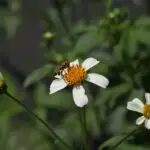Horse Fly Havoc: Understanding and Combating the Pesky Pest
Introduction to the Horse Fly Menace
Picture this: it’s a serene summer afternoon, you’re at a picnic enjoying the warm breeze, and suddenly you’re dive-bombed by a relentless and seemingly unswattable insect. Welcome to the world of the horse fly, a ubiquitous pest that torments both humans and animals alike. In this introductory voyage into the horse fly havoc, we’ll be wading through the murky waters of understanding these pesky critters and how we can outsmart them at their own biting game. So grab your fly swatter, and let’s dive in!
Let’s start with the basics—who are these winged aggressors? Horse flies are not your garden-variety house flies. These larger, faster relatives come equipped with scissor-like mouthparts that can turn a leisurely day outdoors into an episode of ‘Survivor: The Backyard.’ Whether they’re terrorizing cattle in the fields or taking a pint-sized portion of your blood during a hike, the impact of horse flies extends beyond the nuisance—they can be vectors for disease and cause significant stress to livestock.
Now, imagine a picturesque scene: a majestic horse galloping across an open field, the embodiment of grace and strength. It’s an enchanting sight, until the serenity is shattered by the aerial assault of horse flies. With a single thought in their tiny brains—feed—they descend with precision, causing chaos among even the most placid of creatures.
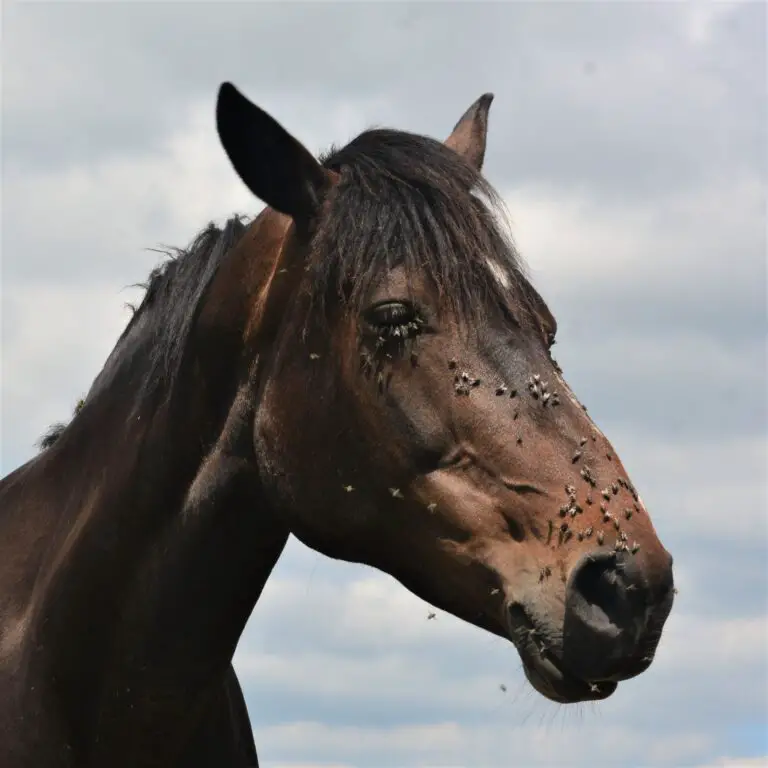
It is not merely about irritation; the aggression of these flies can lead animals to injure themselves in a frantic attempt to escape the incessant biting. But fret not, dear reader, for this article is forged in the spirit of empowerment. We aim to unpack horse fly behavior and offer practical solutions to manage these aerial assailants. From understanding their life cycle to discussing effective control methods, we are here to transform you from a horse fly victim to a well-informed defender of your domain. Want proof that we can coexist with insects without being at their mercy? For more strategies, take a look at our segment on effective pest control for livestock.
Throughout this odyssey of equine and entomological education, remember that knowledge is power. By understanding horse fly temperament and employing smart control tactics, we can alleviate the distress they cause to our four-legged friends—and to our picnic plans. So, stick with us as we navigate the horse fly’s modus operandi and arm you with the information you need to enjoy the great outdoors, one fly-free moment at a time.
Identifying the Horse Fly
When the warm season rolls in, so do the horse flies, turning pleasant afternoons into annoying swatting sessions. But, exactly what are you swatting away? Let’s dive into the world of horse flies and figure out how to tell them apart from their airborne brethren.
First, size matters when distinguishing horse flies. They typically range from three-quarters of an inch to an inch and a quarter — significantly larger than your common housefly. Think of the difference between a single-engine Cessna and a jumbo jet; horse flies are the heavy hitters in the flyweight division.
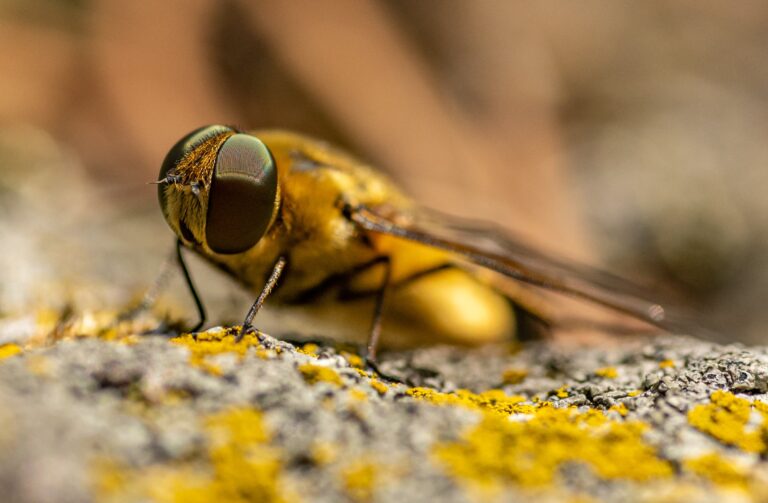
Appearance-wise, horse flies have a robust built, featuring a dark gray or black color. But it’s not just their color that sets them apart—it’s their eyes. Have you ever seen a pair of multifaceted, metallic eyes that seem to reflect the very soul of disco balls? That’s your cue. Horse flies have compound eyes with iridescent patterns that can dazzle and disturb all at once.
Moving to their wings, horse flies keep it plain with clear, slightly tinted wings without any significant patterns. In contrast, other flies sport spotted or banded wings like they’re going to a masquerade. Still, don’t let the simplicity fool you; those wings can beat fast enough to chase down a moving target or evade a frustrated human.
Then there’s the mouthpart, a feature which, frankly, could star in a miniature creature-feature horror all by itself. Unlike their relatives who daintily sip on their meals, horse flies have scissor-like mandibles. These are specifically designed to tear and lap up the blood of their victims—a tiny vampiric chainsaw that results in a bite you’d be quick to notice.
While learning about these pesky pests, it may cross your mind how to keep them at bay. One might not connect horse flies with the idea of bed bugs, but both can cause a fair share of distress. For further insight into keeping your space pest-free, take a gander at these effective strategies for a pest-free home; although the focus may be on bed bugs, some principles apply across the board.
Telling apart horse flies from other buzzing nuisances is key to understanding the enemy. Once you’ve spotted those glistening eyes or heard the deep bass of their wingbeats, there’s no mistaking a horse fly for another. And with this knowledge, you’ll better understand the challenge of keeping these biters at bay and may appreciate the peace of a horse-fly-free day even more.
The Life Cycle of a Horse Fly
When it comes to understanding the nuisances buzzing around our equine friends, it’s essential to start at the beginning: the life cycle of a horse fly. From the moment their eggs are laid, horse flies embark on a fascinating journey of transformation. Let’s dive into each stage and uncover what makes these pests the winged menaces they are.
Eggs: The Kickoff to a Pesky Life
Horse flies begin their life as tiny eggs typically laid on the edges of water bodies or moist soil near ponds or streams. They prefer these environments because, just like a diver needs a pool, their larvae need a wet place to thrive after hatching. The females meticulously choose these spots to ensure their offspring have the best start to their pesky existences.
Larvae: The Hungry Ground-Dwellers
After a brief period, the eggs hatch into larvae, which resemble little, legless alligators with a voracious appetite for organic matter. These tiny predators burrow into the soil or mud, hunting for food and growing rapidly. If you’ve ever walked by a marsh and felt like something was watching you, it might just be a horde of horse fly larvae, bidding their time underfoot.
Pupae: The Transformation Chamber
As the larvae mature, they enter the pupal stage, which is akin to a teenager’s room: a place of massive change. Hidden from view and encased in a protective shell, the horse fly larvae metamorphose into adults. This phase can last anywhere from a few days to weeks depending on environmental conditions. In warmer climates, horse flies can complete their life cycle more quickly, resulting in more generations to pester both humans and animals alike.
Adults: The Aerial Menaces
Finally, adult horse flies emerge with a single goal: to feed and reproduce. While only the females bite and feed on blood to nurture their eggs, both males and females can be seen zipping around, showcasing their aerial agility. They’re like the stunt pilots of the insect world, but instead of applause, they’re usually met with swats and exasperated sighs.
Understanding the stages of growth and environments preferred by horse flies can be invaluable in mitigating the havoc they wreak on outdoor activities. And while these creatures have their role in the ecosystem, horse fly control is critical in areas where humans and livestock coexist. To explore more about pest management, especially concerning fly control, check out the practical tips from the experts on dealing with these flying pests!
“`html
Why Horse Flies Bite and the Risks Involved
You’re enjoying a sunny day out in the countryside, and then there’s that all-too-familiar buzz and a pinch on your skin. That’s right, you’ve encountered a horse fly. But why do these pesky insects bite, and what should you be wary of? Let’s dive into the biting truth behind horse flies and uncover the risks they carry.
Horse flies, those winged nuisances, aren’t just biting for the sake of it. In fact, when a female horse fly snatches a piece of you, she’s doing so to feed on your blood. This blood meal is crucial for her to develop her eggs. Yes, that discomfort is part of a critical life process for the horse fly, though certainly not a pleasant experience for us mammals!
The bite of a horse fly is not only startling but can be quite painful. Unlike the stealthy mosquito, horse flies make their presence known with a bite that feels more like a cut than a prick. This is due to their scissor-like mouthparts that literally slice into the skin. They then release an anticoagulant to keep the blood flowing – think of it as a little extra with your stinging sensation.
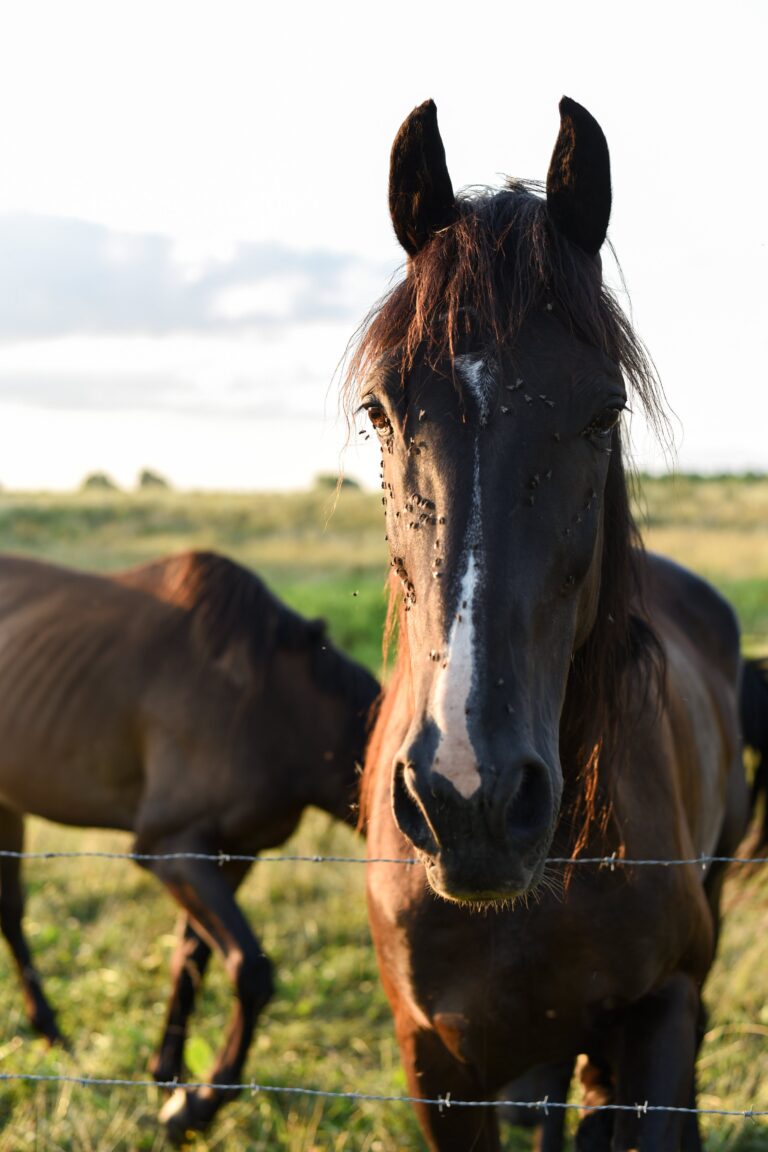
Risks associated with horse fly bites extend beyond the temporary pain. These flies are vectors for some serious diseases, and while they’re not as notorious as mosquitoes, they can transfer pathogens such as equine infectious anemia virus, also known as ‘swamp fever.’ The bites can also become infected if not cleaned and cared for properly, leading to further health complications.
For a deeper understanding of these risks, educational resources like the Centers for Disease Control and Prevention website offer a wealth of information. From preventive tips to treatment methods, staying informed is your first line of defense against these flying fiends.
So, the next time you swat away a horse fly, remember that its bite is more than just an itch. It’s a well-evolved survival tactic with potential health risks we must be vigilant about. Stay safe, stay informed, and keep enjoying those blissful days in the great outdoors—without uninvited, blood-thirsty guests!
“`
Effective Horse Fly Repellents and Controls
Combatting horse flies can feel like a battle, but with the right strategies, it’s a war you can win. Engaging the enemy—those pesky pests—with a combination of commercial repellents, natural solutions, and mechanical traps not only keeps these winged nuisances at bay but also restores peace to your outdoor activities.
Imagine hosting a summer barbecue without constantly swatting away horse flies. While chemical-based repellents have been the go-to for quick defense, the rise of environmental consciousness has brought natural deterrents to the forefront. These include essential oil blends with eucalyptus, citronella, and peppermint, which disorient and drive horse flies away with their strong scents. These natural warriors not only smell better but are kinder to the ecosystem surrounding your homestead.
When it comes to trapping these fast-flying pests, nothing beats a well-placed mechanical trap. These cunning devices mimic the heat and movement of livestock, drawing horse flies in and trapping them before they can wreak havoc. Picture this: a horse fly, zealous in its pursuit of what it perceives to be a tasty meal, only to find itself ensnared, outsmarted by your strategic placement of traps around your property.
Commercial repellents, while effective, often contain strong chemicals that might deter more than just horse flies. However, when used correctly and safely, they can create an invisible barrier that keeps the pests at bay, allowing you and your four-legged friends to enjoy the great outdoors in peace.

Remember, the key to thwarting the relentless assault of horse flies lies in a multifaceted approach. Don’t rely on a single line of defense. Instead, combine your methods to ensure a horse fly-free zone. By employing these controls, you’ll be one step closer to reclaiming your outdoor space from these flying menaces. Keep them on the run and enjoy the sweet victory of a peaceful countryside or back garden, just as nature intended.
DIY Horse Fly Traps: Pros and Cons
Ever feel like you’re in a real-life version of Alfred Hitchcock’s “The Birds,” but with horse flies? You’re not alone. These relentless biters can turn your sunny day into a swatting nightmare. But fear not, dear reader, for today we dive into the crafty world of do-it-yourself horse fly traps. Let’s roll up our sleeves and explore whether going the DIY route is the fast track to buzz-free bliss or a sticky situation waiting to happen.
What’s the Buzz on Homemade Horse Fly Traps?
Imagine you’re at a barbecue, sipping on your favorite cold beverage when suddenly, a squadron of horse flies decides to join the party. Not ideal. Now picture your very own homemade horse fly trap, standing guard like a silent sentinel, luring those pesky pests away from your steak and into their sticky doom. That’s the promise of DIY traps — a beacon of hope in your backyard battlefield.
These contraptions range from simple sticky tapes to more complex setups involving plastic bottles and bait. The idea is to mimic the heat and movement that attract these miniature Draculas. So, does crafting one of these vampire vacuums sound like a fun weekend project or a scene straight out of MacGyver? Let’s weigh the pros and cons.
Pros: Crafting Your Own Combatant
Creating your own horse fly trap comes with a sense of accomplishment that’s as sweet as the nectar these bugs adore. It’s cost-effective and gives you the opportunity to use materials that would otherwise be headed for the landfill — talk about eco-friendly warfare!
Moreover, when done right, these homemade guardians can be quite effective, often harnessing the power of dark colors and water to attract and trap horse flies. Real-life examples show that with a bit of ingenuity, you can create a trap that could even impress MacGyver himself.
Cons: The Sticky Side of DIY
But here’s the rub: creating a truly effective horse fly trap is not always as simple as Pinterest makes it seem. The wrong materials or poor construction can mean your trap is as ignored as a lone mosquito at a dragonfly convention. Plus, there’s the maintenance. These traps can become full quicker than a kiddie pool at a birthday party, and trust me, emptying a trap full of dead horse flies is as fun as stepping in a puddle with socks on.
There’s also the factor of time and effort. Between measuring, cutting, and baiting, you might find yourself wondering if the DIY route is saving time or serving up a heaping helping of hassle.
Still, for those willing to tackle the challenge, the rewards can be significant. After all, there’s nothing quite like watching a trap you built with your own two hands protect your outdoor sanctuary from the ravages of horse flies. And isn’t that a moment worth striving for?
Preventing Horse Fly Infestations in Your Area
As the sun climbs high and the meadows hum with summer’s buzz, a not-so-tiny menace casts a shadow over our pastoral bliss: the horse fly. With a reputation that precedes them, these biters aren’t just a nuisance—they can genuinely disrupt outdoor activities and animal welfare. But fret not! The horse fly havoc can be curtailed with some savvy preventive steps aimed at keeping these pests at bay in rural and suburban locales.
Habitat Modification: The First Line of Defense
Let’s talk about the breeding grounds of the horse fly—typically, they’re all about that water life. Pools, ponds, and marshy areas are horse fly nurseries. By taking measures to manage these watery habitats, you can make a big dent in the local population. Consider filling in unnecessary marshy areas and introducing aquatic plants that naturally clean the water, making it less appealing for horse fly larvae.
But it’s not just about water. Hedges, tall grasses, and wooded edges also serve as prime real estate for these insects. Keeping foliage trimmed and lawns mowed reclaims territory from the horse fly domains. Such changes not only make your area look tidier but also reduce the convenient hangout spots for adult horse flies looking to feed and frolic.
Call in the Natural Predators
Nature has its own cavalry when it comes to pest control. It’s about playing the long game by enlisting the help of natural predators that find horse flies as tasty as they are troublesome. Birds are your aerial allies in this battle. Installing birdhouses or perches can encourage more winged predators to visit your area. These feathered friends not only bring melodies to your mornings but also help keep the pest population in check.
Bats, as nocturnal hunters, also take their fair share of the pesky insects during their twilight forays. A single bat can consume hundreds of insects in one night! Adding a bat house to your property can entice these natural exterminators to take up residence and patrol your skies.
Finally, let’s not overlook the unsung heroes—the insect predators. Dragonflies, also aptly known as “mosquito hawks,” are agile hunters with an appetite for horse flies. Planting flowers that attract these predators can create a powerful defense line against the buzzing invaders.
Real-Life Examples to Inspire You
Consider the rural community of Green Meadows, which implemented a targeted habitat modification program. They filled in unnecessary stagnant water bodies and replaced them with water features that support dragonfly populations. As a result, horse fly incidents have plummeted, and residents now enjoy their outdoor spaces more freely, without the relentless swatting game.
Suburban neighborhoods have found success by forming ‘Predator Patrons’ groups, which focus on increasing bird and bat populations in the area. Bird-watching has become a delightful pastime, and the synergy between leisure and pest control is something to behold. Who knew that bird feeders and bat houses could double up as pest management tools?
Ultimately, it’s about creating an environment that is less inviting to horse flies and more conducive to their natural enemies. Embracing these strategies as a community can lead to substantial improvements, turning horse fly havoc into a thing of the past.
For a visual guide on how to implement these strategies, check out this helpful video:
With these tips and tricks, you’re well on your way to reclaiming your slice of nature from the horse fly’s pesky presence. It’s about being proactive and smart with your environment, and nature itself will back you up in this endeavor.
When to Seek Professional Help
Picture this: You’re all set for a relaxing afternoon in your stable, but instead of tranquility, you’re greeted by the incessant buzzing of horse flies. Despite your best efforts with DIY traps and repellents, these winged warriors seem to have an army—and it’s laying siege to your equine haven. So, when does the horse fly issue shift from a mere nuisance to a full-blown pestilence warranting the cavalry, otherwise known as professional pest control services? Let’s saddle up and find out.
It’s one thing to swat away the occasional horse fly, but it’s quite another when these biting bugs start impacting your horse’s health and well-being. If you find yourself with a swarm that seems larger than the cast of a spaghetti western, it could be time to call in the pros. Signs such as excessive scratching, anxiety in your horses, or even the animals’ aversion to certain areas can indicate that the situation has galloped out of control.
Another hoof print on the path to professional intervention is the effectiveness of your current methods. Are the horse flies loitering like outlaws at a saloon despite all the repellents? Have the traps and lights become their new hangout spots? If your DIY solutions are about as useful as a screen door on a submarine, it’s clear that an expert’s touch is needed.
Let’s talk benefits. Bringing in a pest control service isn’t just about waving a white flag; it’s about mustering a strategic retreat to win the war. These pros come armed with the kind of heavy artillery that horse flies dread: specialized knowledge, experience, and an arsenal of tools that make your homemade vinegar sprays look like water pistols. They understand the life cycle of these critters and can target interventions that are more than just a shot in the dark.
Real-life example? Consider the local riding school that tried every gadget and gizmo on the market, only to find their paddocks still teeming with tiny vampires thirsting for equine blood. A professional pest control outfit swung into action, identifying breeding grounds, disrupting larvae development, and implementing long-term control measures. The result? Satisfied horses, relieved riders, and a horse fly population that finally got the memo.
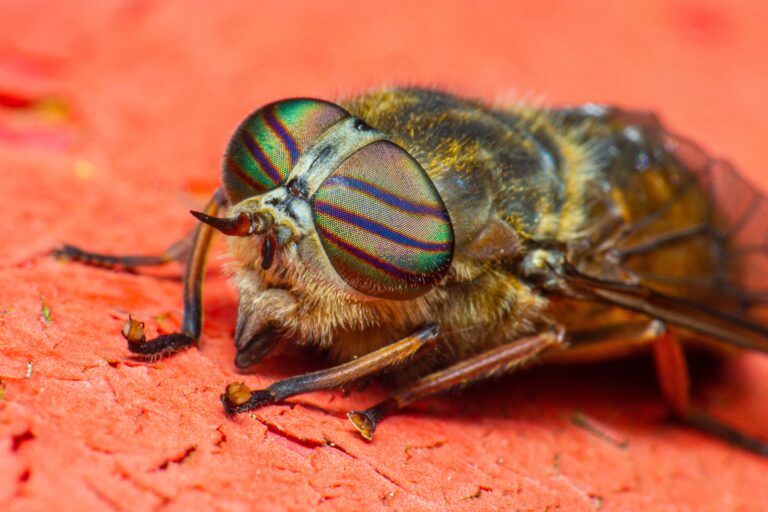
In summary, knowing when to bring in professional pest control for a horse fly problem boils down to assessing the scale, impact, and resistance to your current efforts. Do yourself and your four-legged friends a favor: when the DIY route runs dry, don’t be shy to reach out for help. After all, it’s not just about reclaiming peace—it’s about preserving the health and happiness of your beloved horses.
Frequently Asked Questions
Ever had a peaceful picnic inundated by the incessant buzz of horse flies? Or maybe you’ve witnessed your horse’s tail-whipping frustration as these pests dive in for a bite. You’re not alone! Horse flies are a well-known nemesis in pastoral scenes and backyard hangouts. Let’s dive into some FAQs about these winged invaders and unearth some practical wisdom on keeping them at bay.
What Attracts Horse Flies to My Space?
Picture this: a sizzling summer day by the lake, the scent of sunscreen in the air—a paradise, right? Well, for horse flies, it’s the open buffet of warm-blooded creatures that’s the real draw. They zoom in on carbon dioxide, body heat, and, sorry to say, the sweet aroma of your BBQ. These bugs have a penchant for damp, marshy areas, so if your favorite haunt fits that bill, you might have unwittingly rolled out the red carpet for them.
Are Horse Flies More Than Just a Nuisance?
A horse fly winging its way towards you isn’t just an annoyance. When they bite, they slice the skin rather than pierce it, resulting in a sharp pain likened to a needle jab—a wholly unwelcome sensation at your Sunday picnic. Aside from the ‘ouch’ factor, they can transmit diseases between animals and, albeit less commonly, to humans. It’s a small risk but consider it the cherry on top of why we’d all be better off without them joining our outdoor activities.
How Do I Keep Horse Flies at Bay?
Now onto the crux of it—how do you turn a horse fly party into a solitude retreat? There’s a myriad of options from DIY traps made with dark, shiny surfaces (they adore these) to chemical repellents that have ‘keep out’ written all over them for flies. Then there are the peculiar hacks like hanging bags of water with pennies—a low-tech optical illusion that bewilders these pests. Real-life success stories vary, so finding what works for you might require some experimentation.
Meanwhile, get some insights from the front lines in battling these persistent pests. Hit play below for some guided wisdom and tips from those who’ve taken up the armor in the fight against horse fly havoc:
The Best Time and Way to Tackle Horse Flies?
Timing is everything. Strike at dawn or dusk when these critters are less active. As for the method, ever heard of the swatter dance? It might amuse your neighbors, but there are more efficient ways. Consider fly sprays as they flick on the ‘do not disturb’ sign for your equine friends, or introduce natural predators like dragonflies to your pond. If you’re feeling high-tech, ultraviolet traps are all the rage—they lure flies in and ensure they check out for good.
Is Prevention Better Than Cure?
There’s a saying that goes, “an ounce of prevention is worth a pound of cure,” and that rings true in the realm of horse fly mitigation. Managing your landscape to eliminate stagnant water and tall grass can drastically cut down the local horse fly census. Think about it; if there’s no habitat for larvae or a convenient locale for adult flies to frolic, you’ll naturally have fewer uninvited guests.
Engage in conversation with any farmer, and you’ll be regaled with tales of their relentless battle against these pests. From strategic landscaping to ol’ reliable fly swatters, the quest for fly-free zen is on. The key takeaway? Know thine enemy, experiment with what works, and create an environment that says ‘buzz off’ to horse flies.
